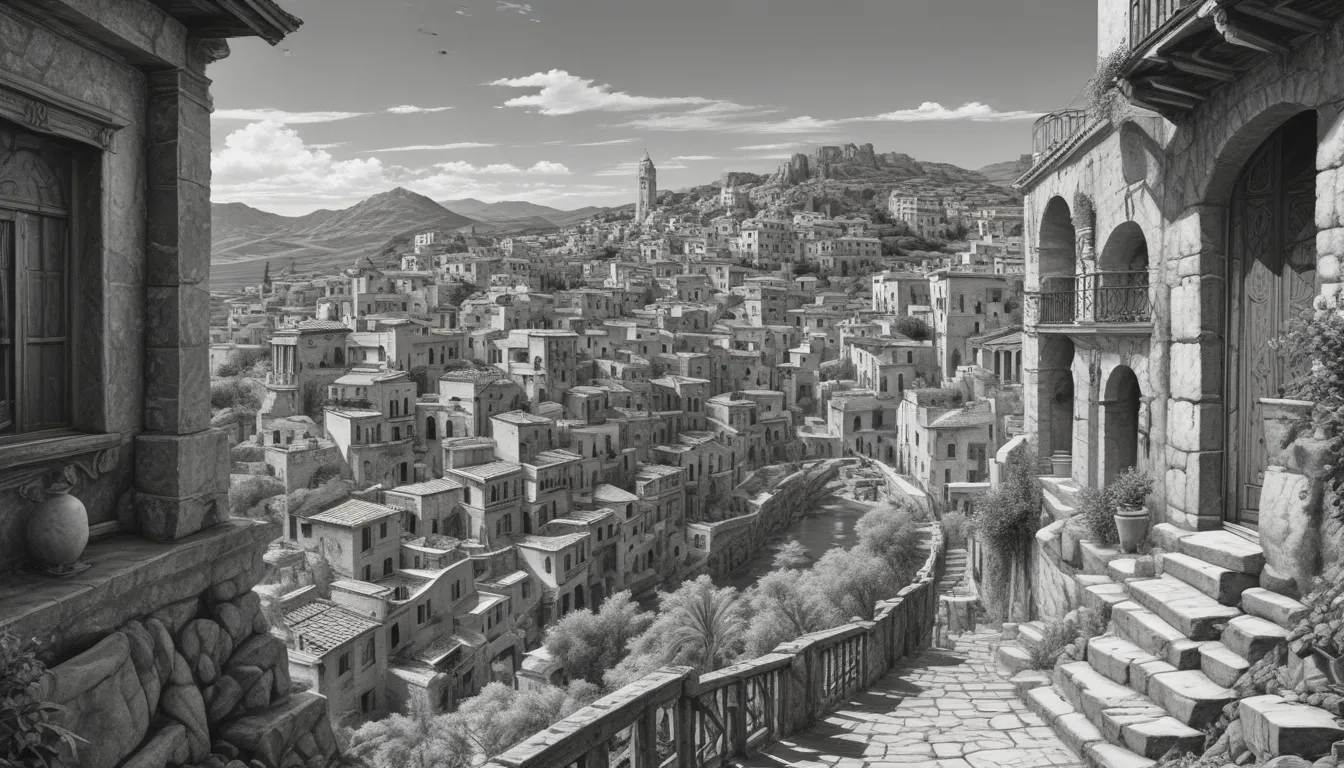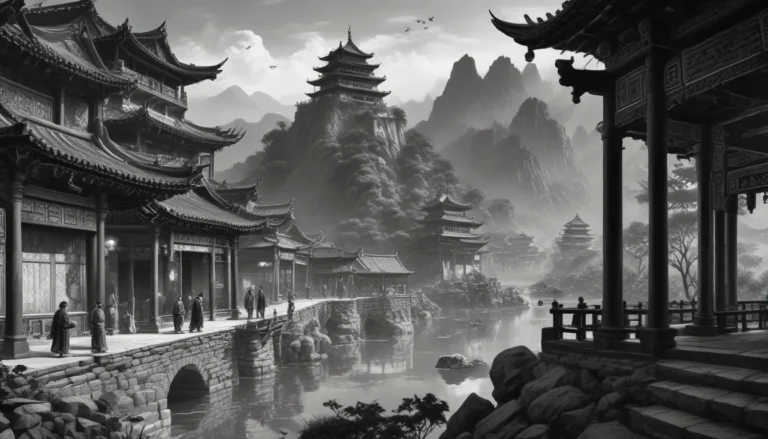The images in our articles are for illustrative purposes only and may not exactly match the content. They are intended to capture your interest and complement the text, not to replace it.
Welcome to Sicily, the largest island in the Mediterranean Sea, a captivating destination brimming with history, culture, and natural beauty. From ancient ruins to stunning coastlines and mouthwatering cuisine, Sicily offers a treasure trove of experiences waiting to be explored. In this article, we uncover 20 fascinating facts about Sicily, showcasing the unique allure of this Mediterranean gem.
Unveiling Sicily’s Enchanting Charm
Sicily is not just an island; it’s a land of myth and legend, a crossroads of civilizations, and a melting pot of cultural influences. Let’s delve into the rich tapestry of Sicily’s history and heritage that makes it a must-visit destination.
Mythology and Folklore
According to Greek mythology, Sicily was home to the monster Scylla and the Cyclops. These mythical creatures, immortalized in tales such as Homer’s Odyssey, add a layer of mystery and intrigue to the island’s identity.
Influence of Civilizations
The strategic location of Sicily has attracted various civilizations throughout history, including the Phoenicians, Greeks, Romans, Arabs, Normans, and Spaniards. This diverse cultural tapestry has shaped Sicily’s heritage, resulting in a unique blend of traditions, architecture, and cuisine.
Ancient Marvels
Sicily boasts some of the most well-preserved ancient ruins in the world. The Valley of the Temples in Agrigento and the Roman Villa del Casale in Piazza Armerina stand as testaments to the island’s rich history and architectural legacy.
Baroque Beauty
The exquisite Baroque architecture of Sicily, particularly in cities like Palermo, Catania, and Noto, showcases the island’s artistic flair and opulent past. Elaborate facades, grand churches, and ornate palaces adorn the streets, captivating visitors with their grandeur.
Exploring Sicily’s Natural Wonders
Beyond its historical and cultural riches, Sicily boasts breathtaking landscapes that beg to be explored. From Europe’s tallest active volcano to enchanting coastal towns, let’s unravel the natural beauty of Sicily.
Mount Etna’s Fiery Grandeur
Rising majestically on the eastern coast, Mount Etna is not just Europe’s tallest active volcano; it’s a symbol of Sicily’s volcanic landscape. Visitors can hike its trails, explore its lunar-like terrains, and marvel at the panoramic views from its summit.
Coastal Charms
Sicily’s coastline is a paradise of azure waters, golden beaches, and hidden coves. Whether you seek relaxation on popular beaches like Mondello and Cefalù or prefer the picturesque charm of Taormina and Siracusa, Sicily’s coastal vistas never fail to enchant.
Island Escapes: The Aeolian Islands
Just off Sicily’s northeastern coast lie the Aeolian Islands, a volcanic archipelago known for its rugged beauty and crystalline waters. From the fiery Stromboli to the tranquil Panarea, these islands offer a haven for nature lovers and adventurers alike.
Savoring Sicilian Delights
No journey to Sicily is complete without indulging in its world-renowned cuisine. Explore the flavors of Sicily, from traditional dishes to delectable sweets, and immerse yourself in a culinary experience like no other.
Gastronomic Delights
Sicilian cuisine is a fusion of flavors influenced by the island’s cultural heritage and abundant local produce. Sample iconic dishes like arancini, cannoli, caponata, and more, each delighting your taste buds with its unique blend of Mediterranean flavors.
Culinary Heritage: The Almond Blossom Festival
In late February, the town of Agrigento comes alive with the Almond Blossom Festival, celebrating the arrival of spring. Colorful parades, music, dance, and culinary delights mark this vibrant event, inviting visitors to join in the festivities.
The Salty Treasures of Trapani
Trapani, known for its sea salt production, offers a captivating glimpse into Sicily’s culinary traditions. Explore the salt pans of Trapani and Paceco, with their geometric formations and crystalline salt beds, and savor the region’s salty treasures.
Immersing in Sicilian Culture
From ancient theaters to traditional festivals, Sicily’s cultural heritage is as vibrant as its landscapes. Delve into the island’s artistic expressions, religious traditions, and historic events that shape its identity.
The Greek Theatre of Taormina
The Greek Theatre of Taormina, dating back to the 3rd century BC, is an iconic landmark that offers a glimpse into Sicily’s ancient past. Set against the backdrop of Mount Etna, this ancient amphitheater hosts performances that transport visitors to a bygone era.
The Palermo Catacombs: An Eerie Attraction
The Catacombs of the Capuchins in Palermo provide a unique insight into Sicily’s funeral traditions. Thousands of mummified bodies, displayed in various poses, offer a fascinating yet eerie glimpse into the island’s past and its treatment of the deceased.
Traditional Arts: Puppet Theater
Puppet theater, known as “opera dei pupi,” is a cherished Sicilian tradition that brings medieval tales to life through intricately crafted puppets. Witness dramatic battles, tales of heroism, and chivalrous deeds as these puppets captivate audiences of all ages.
Navigating Sicilian Traditions
From religious festivals to historic rebellions, Sicily’s traditions reflect the island’s resilience, creativity, and spirit. Explore the customs and events that define Sicilian identity and connect its past with the present.
The Feast of Saint Agatha
The Feast of Saint Agatha, held in Catania every February, honors the patron saint of the city with elaborate processions, religious ceremonies, and traditional Sicilian customs. This event highlights the deep-rooted religious traditions that shape Sicilian culture.
The Sicilian Vespers: A Historic Rebellion
The Sicilian Vespers, a rebellion against French Angevin rule in 1282, marked a pivotal moment in Sicily’s fight for independence. Commemorated annually, this historic event symbolizes the island’s determination to resist foreign domination and uphold its autonomy.
Embracing Sicily’s Heritage
As you embark on a journey through Sicily’s rich tapestry of history, landscapes, cuisine, and traditions, remember to immerse yourself in the warm hospitality of the locals. Sicily beckons travelers from around the world to uncover its hidden treasures and create unforgettable memories.
Frequently Asked Questions (FAQs) About Sicily
Is Sicily safe for tourists?
Sicily is generally considered safe for tourists. Like any travel destination, it’s essential to exercise common sense, follow local guidelines, and be aware of your surroundings to ensure a safe and enjoyable visit.
What is the best time to visit Sicily?
The best time to visit Sicily is during the spring (April to June) and autumn (September to October) when the weather is pleasant, and tourist crowds are smaller. Summers can be hot, especially in July and August.
How can I get around Sicily?
Sicily has a well-connected transportation network, including trains, buses, and rental cars. Trains are ideal for traveling between major cities, while buses and rental cars offer flexibility for exploring smaller towns and remote areas.
What are some must-try Sicilian dishes?
Sicilian cuisine offers a range of delicious dishes to try, including arancini, pasta alla Norma, cannoli, and granita. Don’t miss the opportunity to sample local seafood and wines, adding a flavorful touch to your Sicilian culinary experience.
What languages are widely spoken in Sicily?
While Italian is the official language, English is also spoken, especially in tourist areas. Learning a few basic Italian phrases can enhance your interactions and show respect for the local culture during your visit to Sicily.
As you embark on your Sicilian adventure, let the spirit of this Mediterranean jewel envelop you in its history, culture, and natural wonders. Explore, experience, and savor every moment as you uncover the magic of Sicily.






